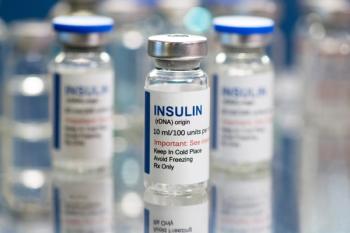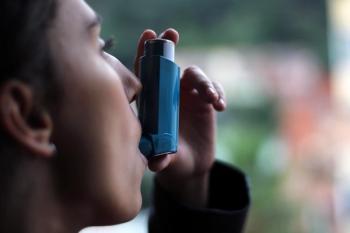
Free Emergency Contraception Sustains Demand Among Patient Preferences
Key Takeaways
- The Dobbs decision led to increased importance of emergency contraception (EC) due to abortion restrictions in many states.
- The University of Utah's no-cost EC program showed a strong patient preference for ulipristal acetate (UPA) over levonorgestrel (LNG).
Researchers explore the no-cost uptake of 2 separate emergency contraception methods.
Through eliminating costs as well as the common barriers when visiting providers, patients’ demand and preferences for the emergency contraception (EC) ulipristal acetate (UPA; Ella) were sustained, according to a study published in Contraception.1
“EC provides pregnancy prevention after unprotected intercourse, under-protected intercourse, and in cases of sexual assault,” wrote the authors of the study. “Its importance and use have increased since the Dobbs decision in 2022, that brought decisions regarding abortion legality to the state level and has so far yielded 14 states enacting total abortion bans and 27 states imposing bans based on gestational age limit.”
In 2022, the Supreme Court overturned Roe v. Wade by stating that Americans’ right to an abortion was not protected under the Constitution.2 Known as the Dobbs decision, this monumental Supreme Court action made way for over half the country to enforce abortion restrictions. Since the 2022 decision, health care experts have gathered to express the importance of promoting reproductive health services and ensuring access to EC.
According to a study published in JAMA Network Open, the dispensing of oral contraceptives—particularly EC—declined significantly in states that imposed abortion restrictions following the Dobbs decision. Researchers identified 285.9 fewer fills for oral contraceptives per 100,000 persons between March 2021 and October 2023.3
READ MORE:
“EC remains an important option for pregnancy prevention and is the only method effective after a sexual encounter,” wrote the authors of an American College of Obstetricians & Gynecologists report.4 “Although progress has been made toward improving access, barriers remain.”
Amid unprecedented legal events surrounding EC, as well as health care experts’ agreement that it is essential to reproductive health care, researchers of the current study wanted to better understand how pricing parameters for EC impacted overall access.
“The Utah program described here sought to increase EC access for immediate ‘emergency’ use and promoted advanced provision supported by available resources,” continued the authors.1 “We hypothesized that removing cost and provider visit barriers would result in sustained demand and patient preference for the most effective [EC] method, UPA.”
In January 2023, the ASCENT Center for Reproductive Health at the University of Utah introduced a no-cost program among Utah residents over 18 for EC, including UPA and levonorgestrel (LNG; Plan B). Through their observation of the program, researchers conducted a study exploring how the no-cost nature of EC at the University of Utah impacted patients’ preferences and desires for the drugs between January 2023 and December 2024.
The university’s standing order allowed patients in Utah to receive up to 3 doses of UPA or LNG without previous visits with a provider. Medications were available via in-person pharmacies or through mail order. Patients were also provided with information on both EC methods, including the evidence supporting UPA as the more effective option when compared with LNG.1
Throughout the study period, the program received 2559 prescription requests and dispensed a total of 5577 doses of either EC method.
While a majority of the population (67%) requested multiple doses of EC, patients significantly preferred UPA over LNG. Indeed, the University of Utah’s program dispensed 2318 LNG pills to 1094 patients and 3259 UPA pills to 1465 patients.
Finally, in-person pharmacy dispensing was much more common than mail-order pharmacy dispensing, with the former increasing from 67.2% to 78.2% of the population throughout the study period.
Whether patients are fully aware of the efficacy backing each option, it’s unsurprising that researchers confirmed their hypothesis of no cost or provider visit barriers translating to greater patient preferences and demand for EC. With programs like the University of Utah’s lifting the financial burdens among patients seeking EC, further developments of the sort are bound to improve health care access and equity.
“Our findings demonstrate that when cost and provider barriers are removed, individuals preferentially select UPA, the more effective oral EC option,” the authors concluded.1 “This illustrates the positive impact that increased education and policy changes can have on EC availability and accessibility. Health care systems and policy makers should consider implementing standing orders or other mechanisms that streamline EC accessibility, particularly UPA.”
READ MORE:
Ready to impress your pharmacy colleagues with the latest drug information, industry trends, and patient care tips? Sign up today for our
REFERENCES
1. Torres E, Elliott S, Carter G, et al. Enhancing access to emergency contraception: results from a no-cost program in Utah. Contraception. Published online November 5, 2025:111288. https://doi.org/10.1016/j.contraception.2025.111288
2. Dobbs v. Jackson Women’s Health Organization. National Constitution Center. June 24, 2022. Accessed November 18, 2025. https://constitutioncenter.org/the-constitution/supreme-court-case-library/dobbs-v-jackson-womens-health-organization
3. Qato DM, Myerson R, Shooshtari A, et al. Use of oral and emergency contraceptives after the US Supreme Court’s Dobbs decision. JAMA Netw Open. 2024;7(6):e2418620. doi:10.1001/jamanetworkopen.2024.18620
4. Access to emergency contraception. American College of Obstetricians & Gynecologists. July 2017. Accessed November 18, 2025. https://www.acog.org/clinical/clinical-guidance/committee-opinion/articles/2017/07/access-to-emergency-contraception
Newsletter
Pharmacy practice is always changing. Stay ahead of the curve with the Drug Topics newsletter and get the latest drug information, industry trends, and patient care tips.













































































































































